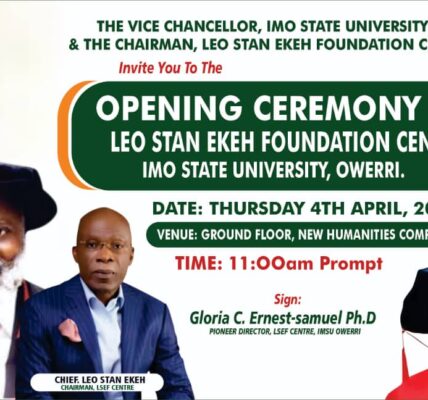By S.N. Subrahmanyan and Sanjay Jalona
The engineering, procurement, and construction (EPC) industry is not well known for leveraging data effectively, nor for using cutting-edge analytics to make informed business decisions. One survey by Cornerstone Projects notes that as many as 85% of companies experienced delays on construction projects.
On one hand, this is understandable, because, after all, this is an industry where much of the work is done on the ground — by workers in hardhats, not in front of computers. On the other hand, however, it is quite strange. The projects within engineering, procurement, and construction industry impact millions of lives — and run into billions of dollars. Why should this industry not benefit from the advances in technology that other sectors have experienced?
As one of Asia’s leading engineering and construction companies, we at L&T Group have sought to bridge this gap.
When we embarked on modernizing our $10 billion construction business four years ago, we acknowledged the cultural issues we would need to deal with, in addition to technology-related challenges. Our ultimate objective was to leverage the power of data-producing computing technologies to significantly improve core operations that utilize workers, machines, and materials to save costs, to improve productivity, and to reduce execution time. Underlying these organizational goals, however, was the existential need to ensure that both management and employees on all levels engaged with these technologies, and that the team could make adjustments to improve their performance based on analyses of the data provided by the technologies.

The Data-Driven Mindset
Harnessing the power of your company’s data.
The cultural challenge to secure adoption of these technologies in the field — and to create a data-driven mindset — was significant. Less than 20% of the L&T workforce uses computers or handheld devices on any construction job site. What’s more, reports coming in from the field were based on estimated values. Managers simply did not think about how data could be used to improve performance. For a workforce adapting to a data-driven mindset, a change of this magnitude can be overwhelming. It took time and effort to help managers understand how access to real-time analytics on projects — created through an integrated mix of technologies like artificial intelligence (AI), the Internet of Things (IoT), virtual reality/artificial reality (VR/AR), robotic process automation (RPA), and geospatial and cybersecurity technologies — could be used.
Four years into the process, L&T Group’s engineering and construction business is reaping the benefits of a well-implemented and comprehensive data strategy. More than 10,700 machines across 450 worksites are now connected. Workplace safety has improved due to immersive training with VR, the use of mobile apps for process compliance, alerts on entry into hazardous zones, and the use of sensors and beacons. Every component of a project can now be measured and benchmarked, leading to improvements such as a 25% increase in equipment fuel efficiency; a 15% increase in worker productivity; and a 10% increase in plant & machinery productivity and utilization. While these statistics are promising, our aspiration is to improve EBITDA by 2 to 3% and to establish L&T as the leader in “digital construction.”
L&T Group’s journey provides a set of lessons for corporations that wish to unlock the value of data and to develop a data-driven mindset. Among these lessons:
“Digital” cannot be just a team. Everyone in the organization needs to develop a digital mindset.
To bring about change at every level, it is important to appoint a digital officer in each business unit, as well as digital champions on all levels of an organization. For L&T Group, investments in predictive maintenance systems — which are monitoring 11,700 pieces of equipment, chatbots, robotic process automation, and 18,000 mobile devices in the field — would have been lost if the whole organization hadn’t bought into the digitization effort.
You need to be bold, decisive, and ready to make adjustments.
When it came to widespread modernization and data-driven efforts, there are few — if any — existing models in the engineering and construction industry for us to learn from. L&T Group conducted internal research and leveraged the experience of its IT service partners, including its subsidiary, LTI, to create a strategy and implementation plan, but made a series of changes along the way. Since we were implementing a new program on such an unprecedented scale throughout every department in our organization, we planned for strategies and technologies to be tweaked once the first rounds of data and analyses poured in. Keep in mind that your organization, industry, and technologies will be constantly evolving and changing.
Data-driven analytics should point toward improvements vs. punishment.
Between sensors on workers’ helmets and equipment, and RFID tags on materials, it wouldn’t be surprising if L&T Construction employees felt as if management was hovering over their shoulders. And while unproductive workers and unsafe practices need to be identified and rooted out, it was important to us to use data to determine where additional training was needed, where procurement could be improved, and whether workflows needed to be updated. Engaging staff in a data-driven mindset means communicating how data can be used to help employees succeed.
It’s important to communicate how the data is benefiting employees and projects.
For employees to embrace a data-driven mindset where there wasn’t one before, a concentrated communications effort is needed. Employees need top-down reminders to think “data first,” and their efforts to do so need to be recognized. Don’t take for granted that employees should be able to see the data-driven improvements all around them. Communicate when benchmarks are established and where there are improvements in key metrics. In this effort, L&T Group uses Workplace by Facebook, an employee portal, webcasts, and e-training modules, all of which are offered when the data shows the need for additional training.
Just as importantly, it is crucial to illustrate to staff, on every level of the company, how data is helping employees perform better and how it is helping the company as a whole to operate more effectively.
You need to measure what is really important.
Having a data-driven mindset doesn’t mean measuring everything, especially in the early stages. It’s difficult to go from collecting little data to amassing data on every person and process without creating “data fatigue.” For example, when setting up predictive maintenance systems on construction equipment, L&T Group focused on assets that provide the most value, such as concrete batching plants, motor graders, cranes, wheel loaders, and excavators. If you measure everything, it is easy to lose sight of the most important areas.
Establishing a data-driven mindset throughout an organization is just the first step. Maintaining that mindset until it becomes part of the culture is the ultimate goal. Done successfully, this mindset will create a proactive and engaged workforce that has a greater understanding of how they are performing and insight into where improvements can be made.
*S.N. Subrahmanyan is CEO and Managing Director of L&T, one of the top 15 engineering firms globally and the largest in India. In 2019, Construction Week magazine ranked him 13th in the CW Power 100 list.









